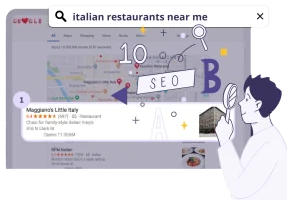With customer experience at the top of your priority list, there’s no surprise that like every restaurant owner you are constantly on the lookout for new ways to boost your operational efficiency. Certainly with qualified staff and masterful scheduling, the shifts seem to run smoother, customers happier, and you get to avoid the chaos. Yet, there are times that something feels off, and more likely than not – it’s because you still haven’t mastered a smooth shift handover just yet.
Seamless shift handover is one of the most overlooked elements in restaurant operations, that can leave a bitter after taste for customers and staff alike. A poorly managed shift transition can lead to service delays, confusion, and poor team morale. So why leave it up to chance? Follow the 6 steps below to standardise the process and help your staff handle shift changeover like pros.
1. Spell out the handover steps
One of the key elements to ensuring smooth shift transition is establishing a standardised handoff procedure. Create a set of clear guidelines on what needs to be done and communicated when one shift ends and another one begins. From the status of current orders and stock levels, to special requests from the customers and even heads up on the large parties due to arrive – this information can be critical in avoiding any blind spots. Make sure to include these as part of the onboarding training in the future too.
2. Provide tools to simplify communication

Some shifts can get hectic, and there isn’t always an opportunity to have a quick catchup and pass on all the necessary information between all employees before the handover. In these cases, a booking management system can be a game-changer. Staff can see pending reservations, seating arrangements and waitlist in real time, drastically reducing the chances of any miscommunication. This also ensures that new staff coming in are aware of any last-minute changes, preventing service interruptions.
3. Embrace the team spirit

Processes – check! Online reservations system – check! But something still feels off? Don’t forget, shift changes aren’t just about passing information – they’re about teamwork. Take a step back and consider how you can best foster a culture where your staff understand the importance of working together.
By encouraging a brief overlap period between the shifts, outgoing and incoming employees can have the opportunity to interact directly and slowly hand off the tables and resolve the pending tasks quicker. To that end, regular staff meetings can also promote collaboration long-term and ensure everyone stays on the same page. Use these as not only the opportunity to reinforce the handover checklist, but also as a chance to build closer and more personal connections between all employees.
4. Accountability mindset
As a restaurant owner or manager, you are the very first to set an example when it comes down to on-job accountability. Effective communication, clearly defined expectations and even seemingly small things like showing up on time are guaranteed to make a difference in the way that your staff perform on their shift too. Only by setting the tone and exploring how everyone’s actions impact not only the next shift’s performance, but the overall success of the restaurant, can you encourage a more diligent and active staff performance.
5. Emphasis on continuity

Seamless shift handover is the one that happens without any difference to the experience at your restaurant, not to the fellow staff and especially not to your customers. That’s why emphasising continuity in this shift based environment is especially important.
Train your staff to be focused on your restaurant guests, even during the shift transition. For example, during the handoff, the staff can introduce the incoming team member to the remaining tables. This seemingly small gesture can make a world of difference to the guest’s experience, and also quickly fill in the newcomer on the current status of tables. It’s a win-win!
6. Monitor and improve
Shift handover isn’t a one-off task, and just like any other restaurant process, it requires continuous monitoring and refinement. After introducing the guidelines to help direct staff prioritise the necessary handover steps, check back after some time to see whether any gaps still remain unaddressed. One great way of doing so is also by seeking feedback from your customers, as well as employees. Establish open and honest communication flow with both parties to spot recurring issues, and adjust your processes accordingly. This can be done by reviewing your handover checklist, and at times hosting a dedicated staff training to further reiterate on the updated practices.
Exceptional shift handover with Tableo

A well-thought shift change process can enhance customer experience, build a better team and really set you apart from the competition, but it takes time. To help you improve your shift handover practices, Tableo offers a free version to test out just how effective the online reservation system can be in enforcing a centralised, consistent and real-time staff updates. From spotting your restaurant’s VIPs, to retaining information on special requests and helping pre-plan your floor plan for the night – we are here to help you leverage the power of exceptional shift handover. Start now by setting up your free account today.

Unlock the tips that will help you stand out from the crowd and get more bookings!

Learn how to save time, reduce stress and fill your restaurant while you sleep!

Stephanie Paris
Gen-Z marketing coordinator bringing fresh energy to web and graphic design, with a weekend habit of chasing adventure.

Stephanie Paris
Gen-Z marketing coordinator bringing fresh energy to web and graphic design, with a weekend habit of chasing adventure.









